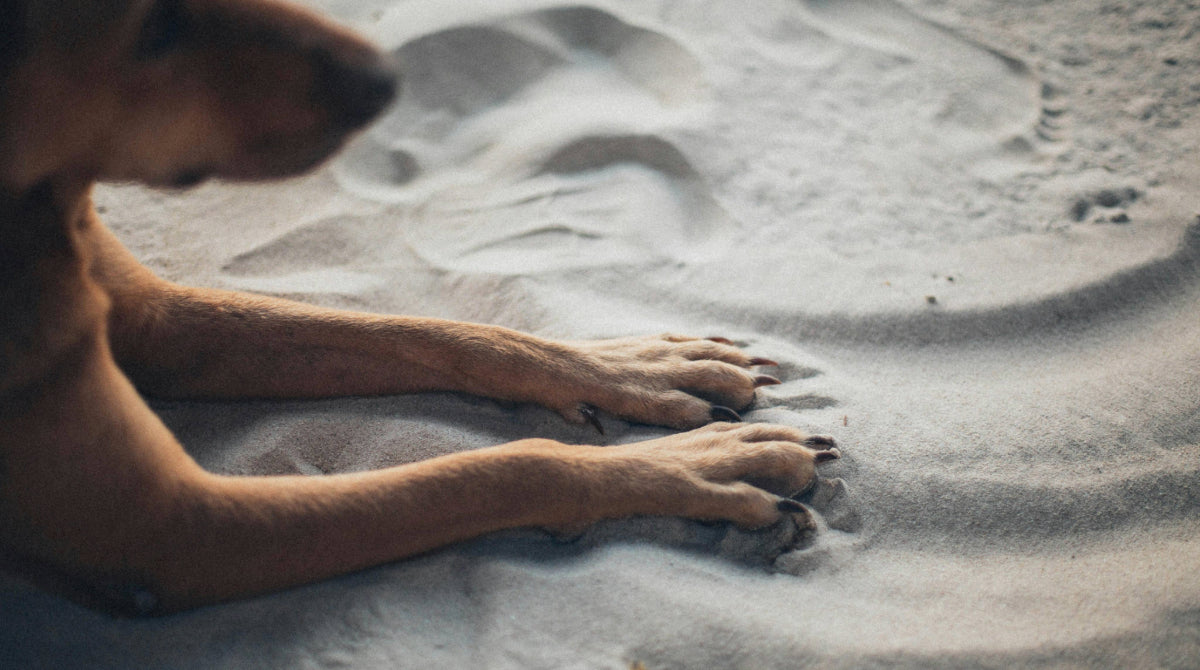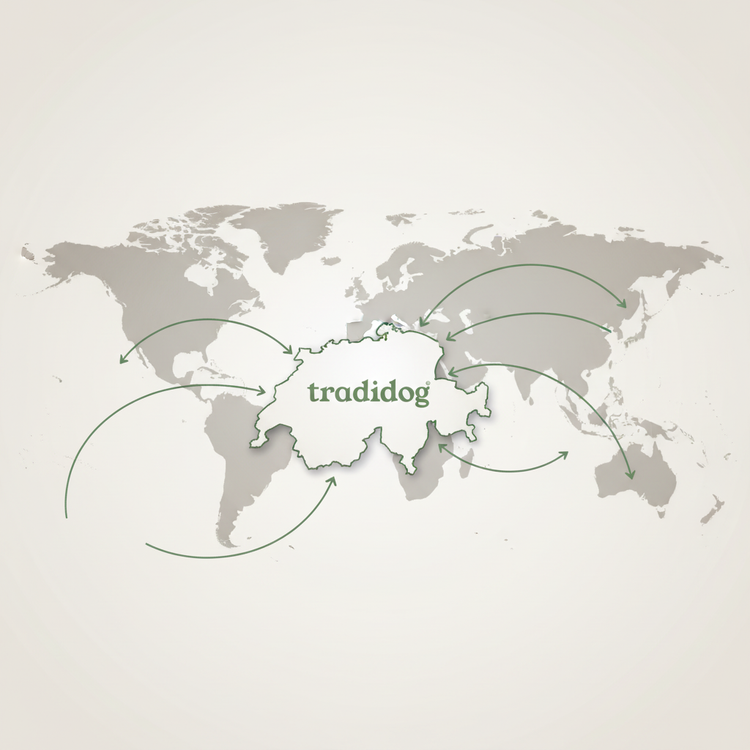
dog paws
Your dog's paws are true wonders of nature. They carry him over hill and dale, protect his joints, provide grip on smooth surfaces, and help him explore the world. At the same time, they are subjected to extreme stress and require your attention and care. In this article, we delve deep into the world of dog paws, from their anatomy and functions to tips for proper care.
Structure and functions of dog paws
A dog's paws consist of different parts that are perfectly coordinated to perform a variety of tasks:
Pads – The foundation of the paws
- The pads are thick, elastic cushions made of a combination of fat and connective tissue. They act as shock absorbers and protect your dog's bones and joints from impact.
- A rough surface provides additional grip on various surfaces, whether smooth tiles, slippery asphalt or muddy meadows.
- Studies have shown that the bales have a high resilience and can even adapt to different environmental influences.
Claws – Practical tools
- The claws help your dog to support himself, dig, and hold objects.
- They are particularly important on slippery surfaces as they provide additional grip.
- However, claws that are too long can lead to poor posture or even pain.
Interdigital skin – flexibility and protection
- The skin between the toes provides mobility and flexibility, allowing your dog to move safely over uneven or difficult terrain.
Temperature regulation
- Did you know that dog paws have sweat glands? These play a role in temperature regulation and fighting off bacteria.
Reactions to environmental influences
Heat in summer
- Hot asphalt is one of the biggest dangers for dog paws in the summer. Temperatures above 50 degrees Celsius can burn your dog's pads.
- A simple back-of-the-hand test: Place your hand on the floor for a few seconds. If it's too hot for you, it'll be uncomfortable for your dog, too.
- Alternatively, special paw shoes can provide relief.
Cold and road salt in winter
- Cold temperatures dry out the pads, which can lead to cracks and pain. Snow and ice can clump between the toes and cause pressure sores.
- Road salt is another problem because it irritates sensitive skin and, in the worst case, is toxic if licked off.
Detection of injuries and problems
Warning signs of paw problems
- Limping or avoiding contact with the ground
- Excessive licking or biting of a particular paw
- Visible redness, swelling or open wounds
First aid for injuries
- Small cracks or wounds : Clean the affected area with clean water and disinfect it carefully.
- Splinters or foreign bodies : Carefully remove these with tweezers and then apply paw cream.
- Deep cuts or persistent swelling : Seek immediate veterinary attention.
Paw care – tips and tricks for healthy paws
Regular inspection
- Check your dog's paws after every walk. Look for small stones, splinters, or dirt that might be stuck between the toes.
Claw care
- Trim your dog's claws regularly to prevent poor posture. A good guideline: The claws should not touch the ground when your dog is standing.
Use paw balm
- Special paw balms or creams keep the pads supple and protect them from environmental influences. Natural products containing beeswax or coconut oil are especially recommended.
Cleaning after the walk
- After walks in winter, you should clean the paws with lukewarm water to remove road salt and dirt.
- Dry the paws thoroughly, especially between the toes, to avoid skin irritation.
Paw protection in extreme conditions
- Dog shoes can provide effective protection in extreme situations, such as hiking on sharp surfaces or in icy temperatures.
Products for paw care
Recommended products
- Paw balm : Natural versions with shea butter, beeswax or calendula extract.
- Paw shoes : Water-repellent and breathable, ideal for extreme conditions.
- Claw clippers : Special scissors or grinders for claw care.
Home remedies for care
- Coconut oil : Has antibacterial properties and moisturizes.
- Chamomile baths : Help with irritated skin and minor inflammations.
Conclusion
Your dog's paws are an essential tool for his well-being and vitality. They carry him through a variety of situations – from exciting walks to long games to challenging hikes. But precisely because they are so versatile, they require your special attention.
Regular paw care not only ensures your dog stays pain-free and mobile, but can also prevent serious injuries or illnesses. From checking after every walk to using special care products, you can do a lot to maintain your dog's health. Simple measures like cleaning their paws, properly trimming their nails, and applying paw balm also play a major role.
The environment also has a significant impact on your dog's paws. Whether it's hot asphalt in the summer, icy roads in the winter, or sharp surfaces – with the right preparation and protective clothing, you can help your dog safely overcome these challenges. Remember: prevention is better than cure.
A dog with healthy paws is a happy dog. By taking the time to care for their paws, you're not only contributing to their health but also to a deeper bond between you and your four-legged friend. Together, you'll enjoy every adventure without worry—step by step.
You can find more information in our second blog post on dog paws . So feel free to check it out.
Share

